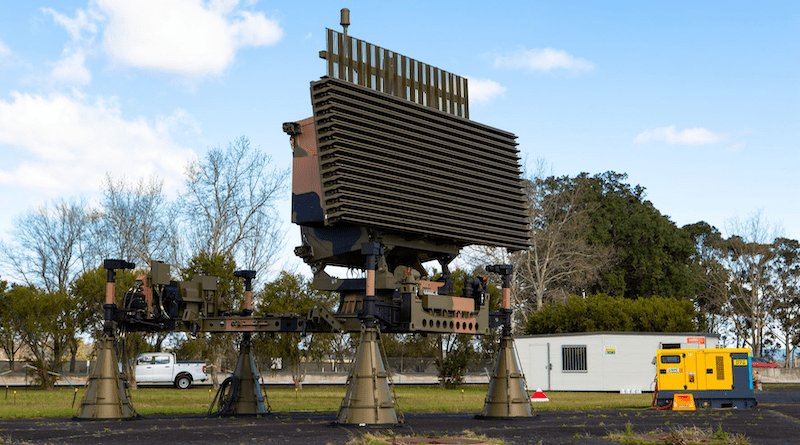Indra Delivers Deployable Air Traffic Management System To Royal Australian Air Force
Indra Australia said Monday it has delivered to the Royal Australian Air Force (RAAF) three Defence Deployable Air Traffic Management and Control Systems (DDATMCS) that will strengthen its capacity for rapid deployment and airspace management anywhere in the world.
The DDATMCS will allow the RAAF to manage approach an en-route air traffic. Two of the systems have two operator positions each and are intended for rapid deployment by air, land or sea for operations of a short duration, such as during Defence assistance to humanitarian aid and disaster relief operations.
This provides the RAAF with a critical deployable capability to safely support incoming flights when air traffic management infrastructure does not exist or has been damaged by disaster or warfighting.
The two systems consists of a deployable and transportable 3D medium range surveillance radar from Indra’s Lanza family of radars and is fully integrated into a mobile Area Control Centre (ACC). The ACC is equipped with Indra’s Air Automation system,which offers state-of-the-art air traffic control, meeting International Civil Aviation Organization (ICAO) and Eurocontrol standards.
The system’s surveillance capabilities are complemented by Indra’s Monopulse Secondary Surveillance Radar with Mode 5 Identification Friend or Foe and ADS-B (Automatic Dependent Surveillance–Broadcast) signal reception and treatment system, which supports the early detection of both cooperative and non-cooperative targets.
The third and final system will support larger and more permanent RAAF deployments through an integrated ACC, with up to six operator positions.
Tehmur Khan Galindo, Managing Director of Indra Australia, said: “This system will replace Air Force’s previous capability and will provide increased flexibility and deployment options, providing important upgrades in deployed airspace and airfield management. The achievement of this critical milestone demonstrates Indra’s commitment to the Australian market and to providing mission critical systems to Australia, through an ongoing partnership between Indra and the ADF. We will now leverage this experience in support of future programs, with the aim of becoming a strategic partner for the modernization and digitization of the Armed Forces.”
Indra Australia has partnered with Australian company Daronmont Technologies (www.daronmont.com) to manufacture the mobile control centres in Australia. This recognises Daronmont’s proven capability in delivering deployable infrastructure to the ADF and has ensured high levels of Australian Industrial Capability (AIC) content in the program.
Indra recently commenced maintenance work on the systems for five years, under the CAF12 sustainment contract.
Leading technology
Indra has delivered deployable radars and air traffic management systems to some of the world’s most advanced Air Forces, including the German, UK, Brazilian and Spanish Air Forces, among others. Indra is the leading supplier of transportable 3D radars to the NATO, and has been the winning bidder in all tenders over the last fifteen years. It is a sensor that has demonstrated the highest capabilities in the most complex environments on the planet.
Indra is one of the world’s leading radar manufacturers. It is working on the evolution of the Eurofighter radar and has delivered one of the most powerful and advanced space surveillance radars currently in operation in Europe, capable of detecting objects orbiting more than 2,000 kilometers away from earth and tasked with protecting launches, satellites, and the international space station.
Moreover, it is one of the world’s leading suppliers of air traffic systems, with systems supplied to 180 countries.
Indra’s experience in this field is combined with its position as one of the major defense companies leading the development of the cutting-edge technologies that will shape the future of the sector. It is one of three European companies that are coordinating the development of NGWS/FCAS, a futuristic air combat system based on the use of next-generation aircraft and drones operating in a combat cloud and exchanging real-time data with multiple platforms. It is also driving the digitalization of armies with the introduction of technologies based on hyperconnectivity, cloud computing, artificial intelligence, virtual reality and cyber

